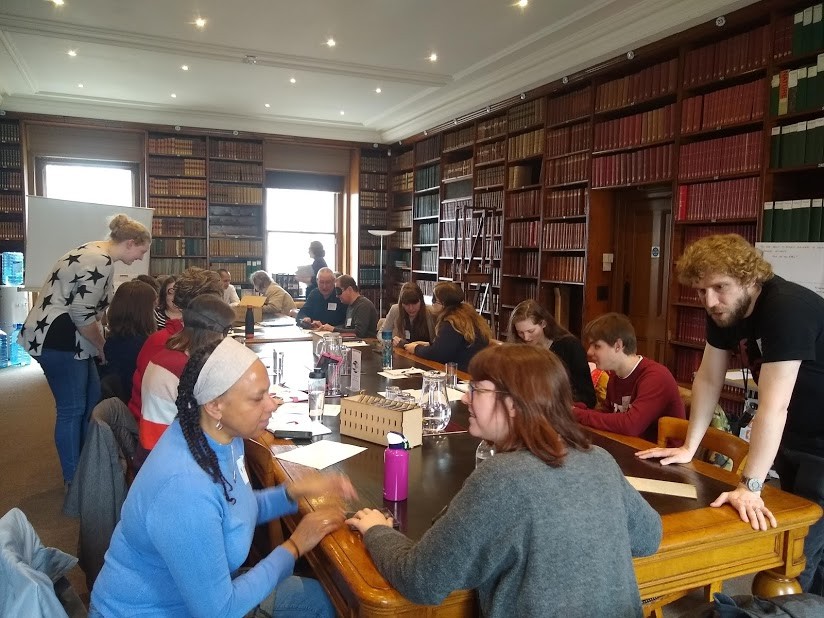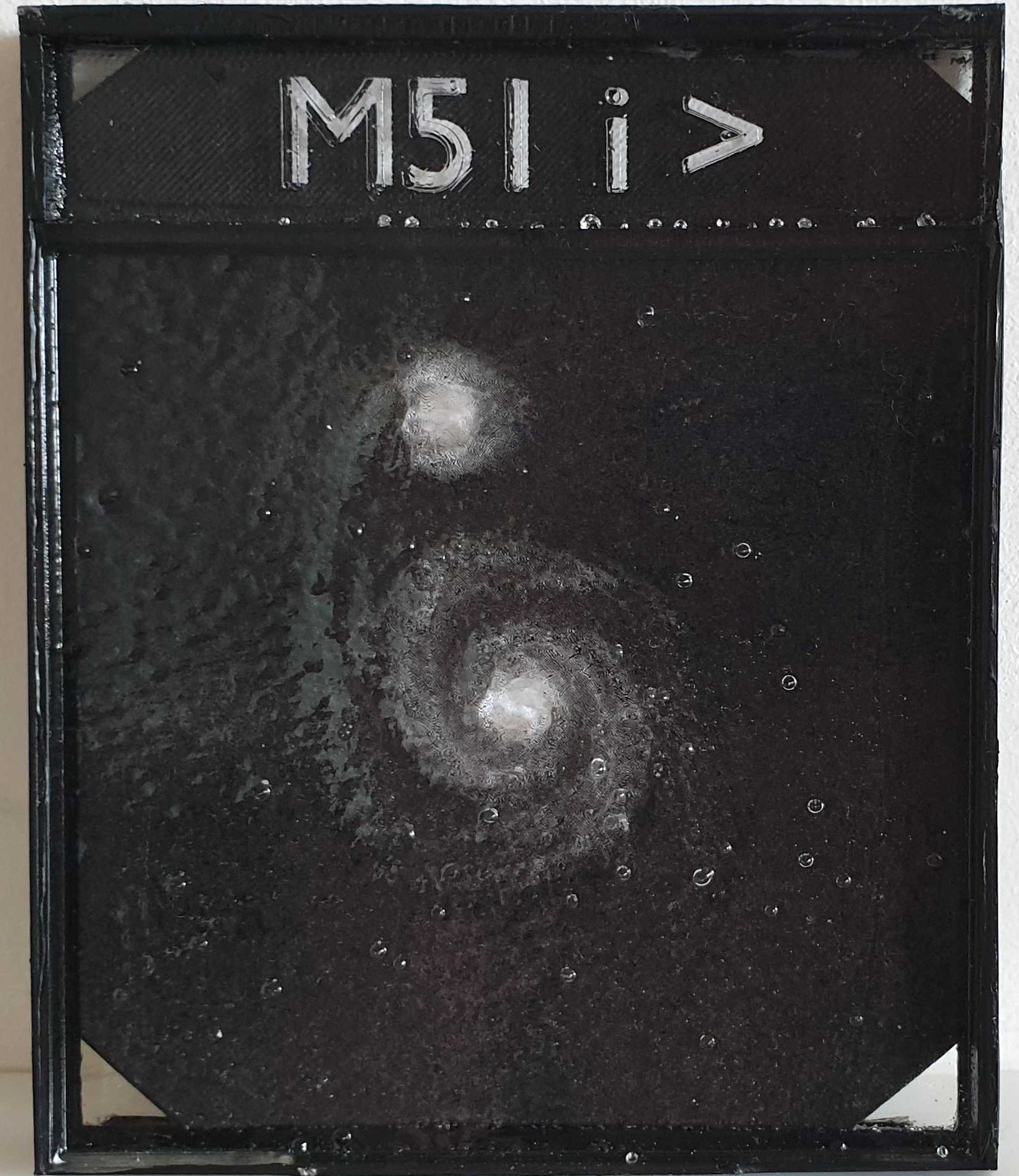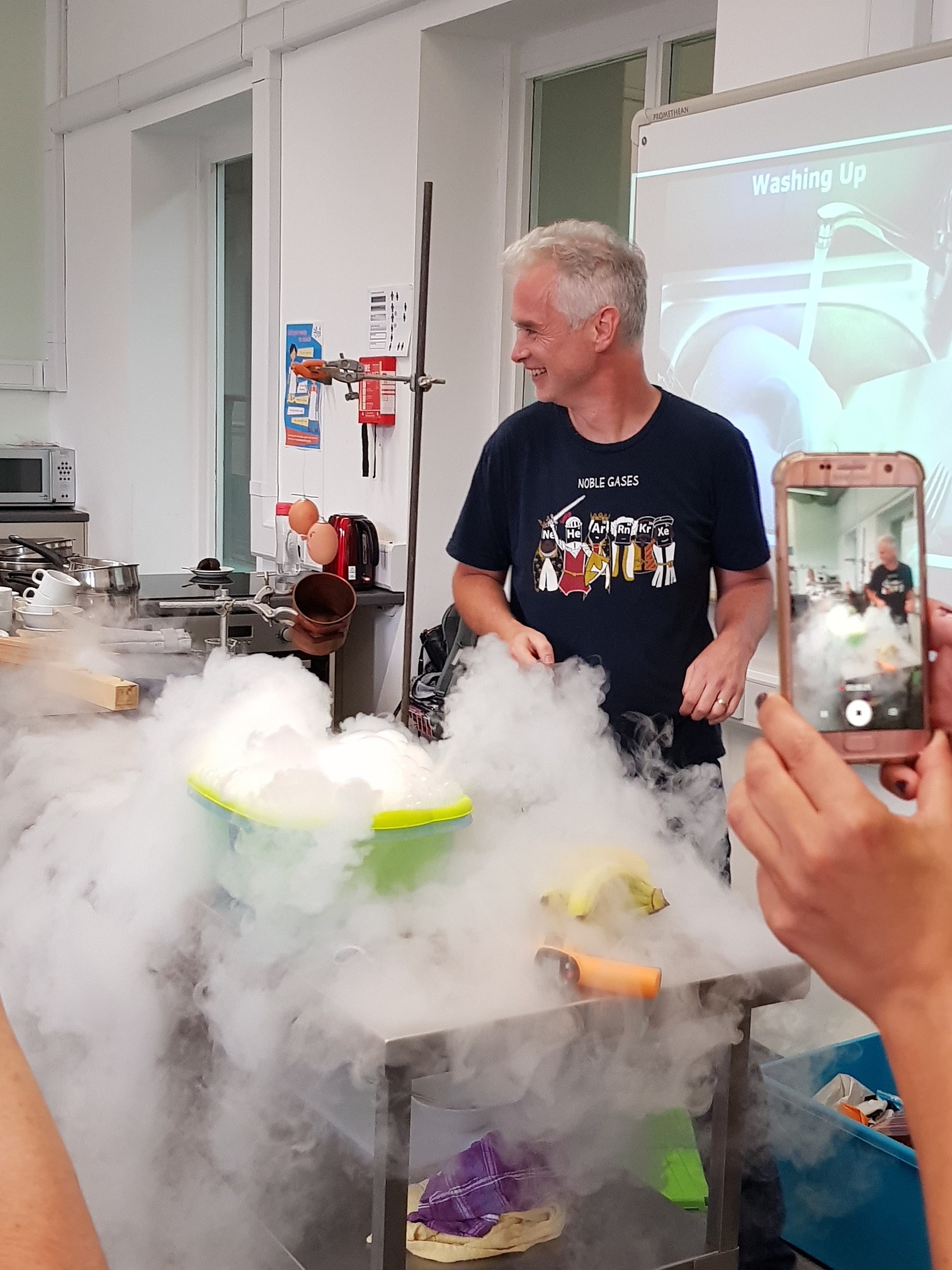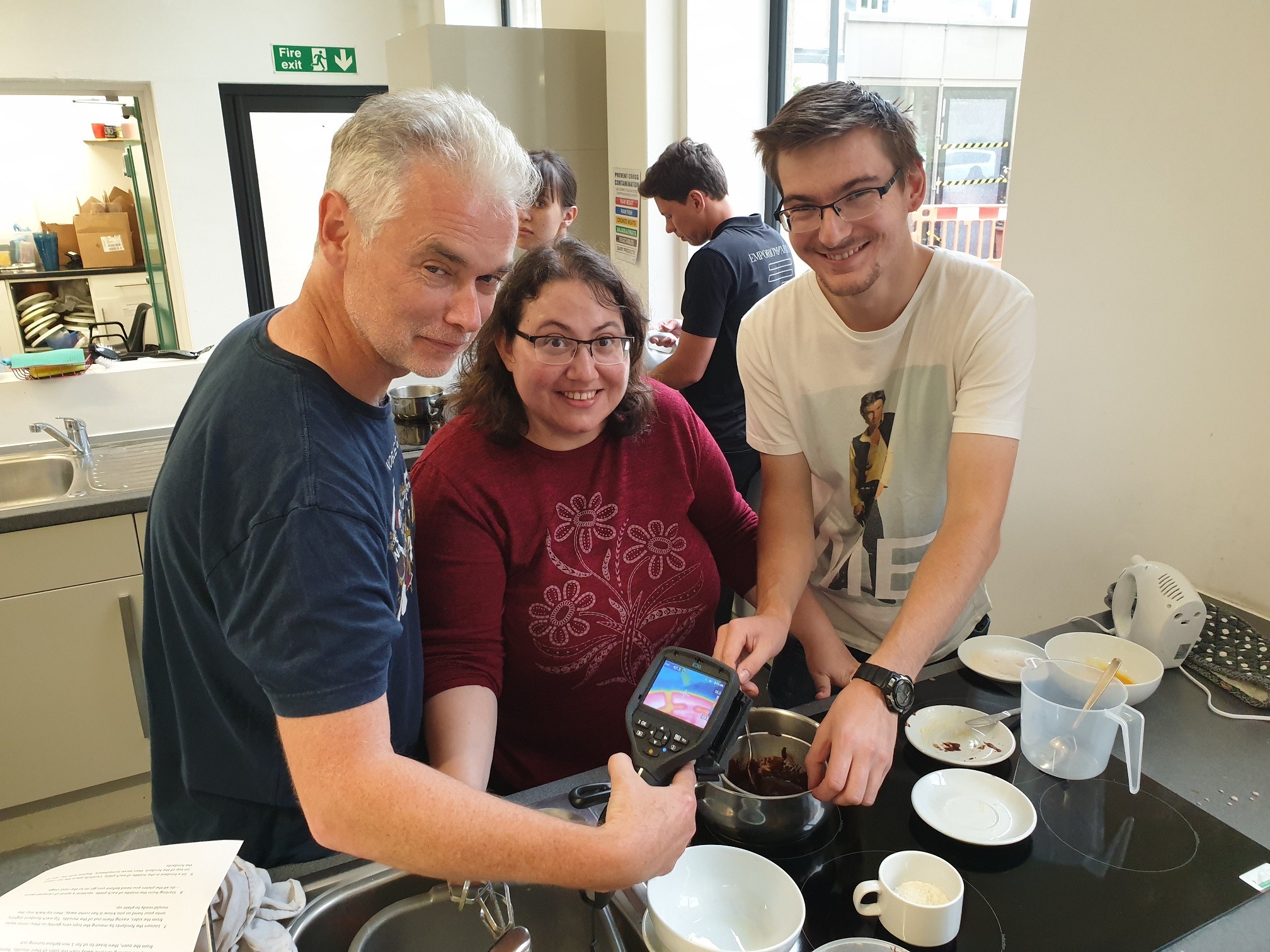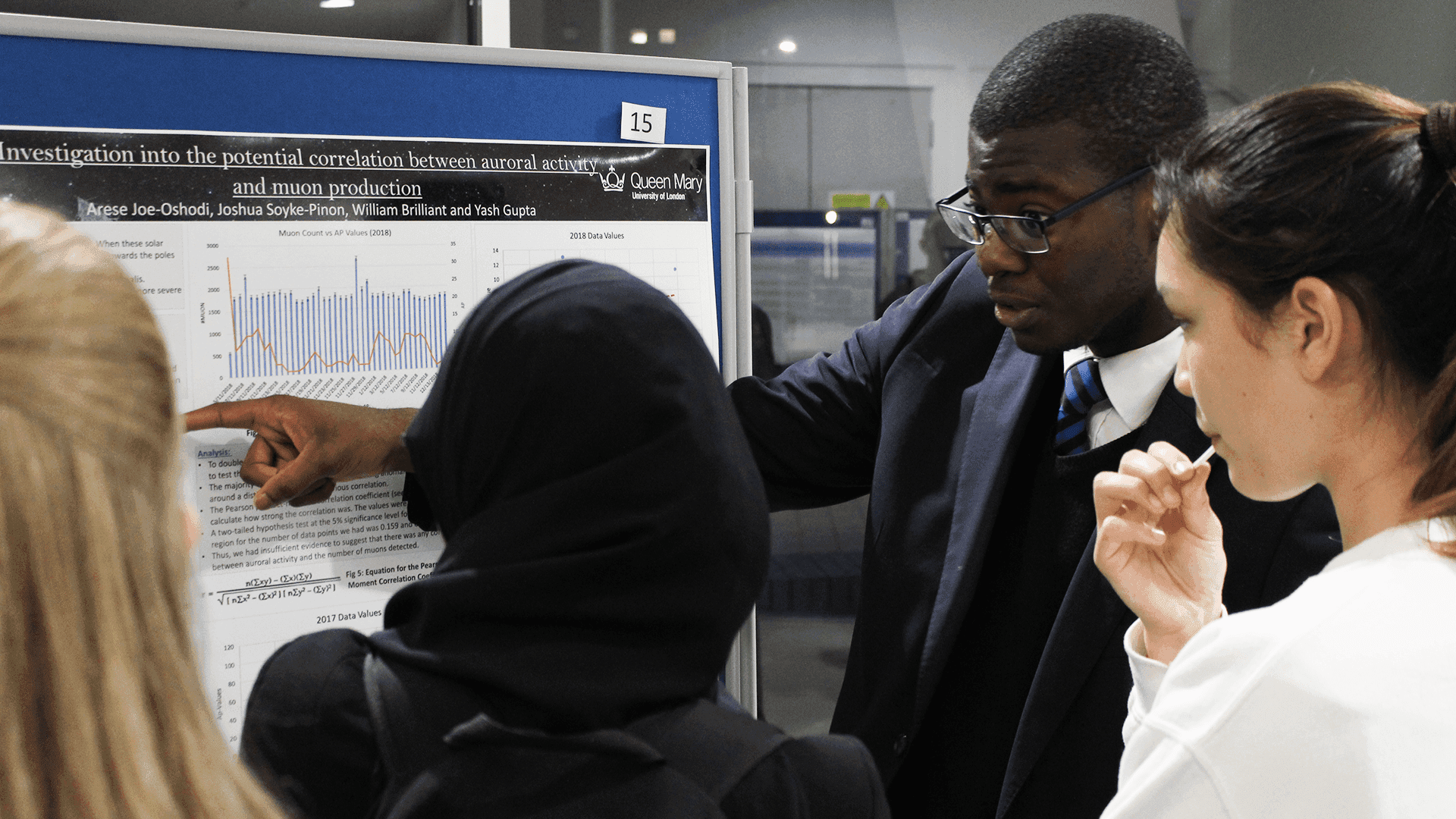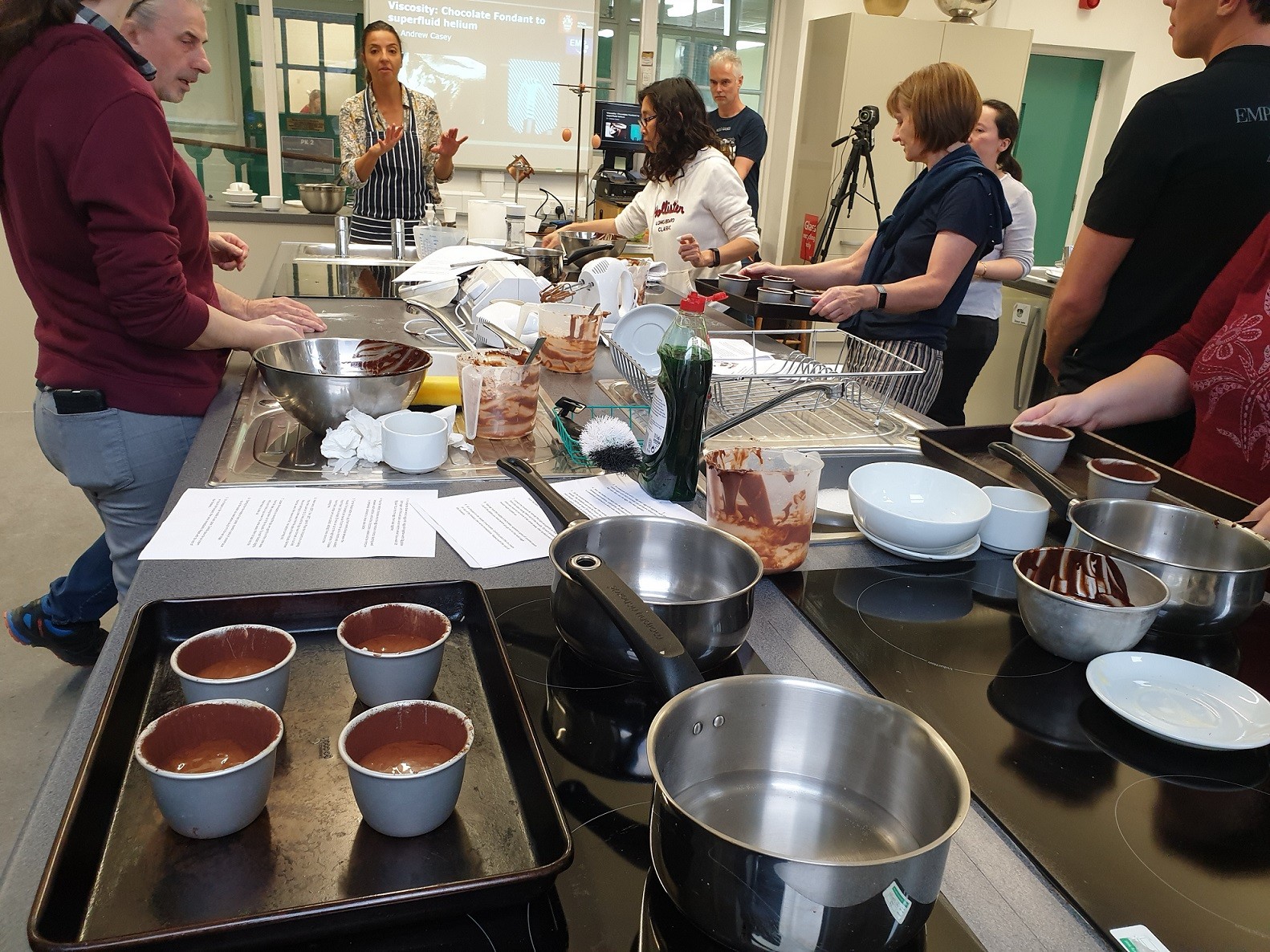
Public Engagement Events
We have collected a range of case studies from across our partner universities. We want these to showcase the work happening at SEPnet universities and to act as sources of inspiration for the range of possible public engagement activities.
University of Portsmouth - Tactile Universe
The Tactile Universe is a public engagement project based at the Institute of Cosmology and Gravitation, part of the University of Portsmouth. The project uses multilevel tactile representations of real astronomical data/images to make current astronomy and astrophysics research accessible to the blind and vision impaired (BVI) community.
Initially funded by a small SEPnet award, the team were able to start prototyping 3D printed models and improve them with collaboration from the local BVI community in Portsmouth. Since initial testing, the team has mostly focused on providing teaching resources for KS2 and KS3 school students, to show how research into galaxy morphology and galaxy optical colour/stellar populations can be used to understand more complex ideas like galaxy evolution and formation.
In 2017 the project won a Nucleus Award from STFC which allowed Tactile Universe to expand nationally and to:
Produce 20 kits that would be freely distributed to interested groups across the UK
Provide these groups with training in how to use the resources
Deliver the KS2 and KS3 lessons to BVI individuals in remote locations
The training has taken place and the kits have been distributed, so the next step for the Tactile Universe team is to keep the momentum going and provide support to those delivering the project across the UK.
To find out more, download 3D printable models and all of the resources for free, and to keep up with the project, please visit the website, tactileuniverse.org.
Royal Holloway University of London - Super Cool Baking: an evening of discovery
At Royal Holloway Physics, we greatly value engagement opportunities with schools and the public, and we offer a programme of events, visits, and other opportunities to make it happen. We run a popular programme of evening lectures, which is now in its fifth year and goes from strength to strength, reaching an average of almost 300 participants per lecture. We are working into doing these evenings as interactive as possible with Physicists available to talk with the audience before the lecture, and an extended QnA following up with small incentives for the audience to ask questions (45 minutes of lecture, 25 minutes of QnA).
We are now looking forward into doing the next steps in public engagement, work with local communities and eventually co-design our activities. We are looking to engage with people not particularly interested in Physics, and to showcase the relevance of Royal Holloway research with everyday life activities. These aims, combined with the wish to offer an interesting, out-of-the box event coming from the education team of the Richmond and Hillcroft Adult Community College (RHACC), resulted in the creation of our latest initiative, the Super Cool Baking project, a collaboration between our Ultralow Temperature Physics group and the Cooking and Baking Department of RHACC, kindly supported by the IoP LSE branch.We are now looking forward into doing the next steps in public engagement, work with local communities and eventually co-design our activities. We are looking to engage with people not particularly interested in Physics, and to showcase the relevance of Royal Holloway research with everyday life activities. These aims, combined with the wish to offer an interesting, out-of-the box event coming from the education team of the Richmond and Hillcroft Adult Community College (RHACC), resulted in the creation of our latest initiative, the Super Cool Baking project, a collaboration between our Ultralow Temperature Physics group and the Cooking and Baking Department of RHACC, kindly supported by the IoP LSE branch.
It is said that if cooking is an art, baking is a science (anyone who has forgotten one tiny ingredient and had the whole bunch flop can testify). But would you expect that the same properties you manipulate to make a cake in your kitchen are also a subject of manipulation for researchers who try to discover new forms of matter? Physics concepts, like viscosity, layered structures and low temperatures are experienced hands-on by making desserts like chocolate fondants, millefeuille or gelato.
The pilot for this exciting idea was delivered on the 10th of September 2019 by Physicist Dr. Andrew Casey and clinical nutritionist and cookery instructor Ms Laura Ercolani. The chocolate fondant class was in for a surprise when Andrew Casey started talking about how the molten chocolaty lava inside their soon to be made fondant cakes was really not too dissimilar from the superfluids he works with.
After a demo session with Laura Ercolani, the class were thrown in at the deep end; in pairs they began mixing, folding and baking their way to chocolate fondant goodness- with ingredients measured out to scientific precision no less! Andrew Casey in the meantime took the Department’s infrared camera and visualised for the aspiring bakers whether they had properly mixed and melted chocolate and butter together. Once the chocolate fondants were off the oven and left to cool, the science session of the evening officially took off.
Andrew Casey showed the class how the flow in baking is essentially the same as the flow in science. When helium is cooled down to its critical temperature, the liquid density drops, thus the liquid becomes a zero-viscosity superfluid.
To the classes intrigue, he then linked this to the gooey middle of their just out the oven fondant cakes, pouring out the centre as if they too were a frictionless superfluid. By the end of the session, a room of novice bakers who would have never come across the idea of superfluidity in their day to day lives was passionately discussing Physics. Andrew Casey commented that “it was great to observe the similarities between the novice cooks learning how to make fondants and our students learning physics in the teaching laboratory. They share a sense of curiosity and enthusiasm for experimentation”.
Evaluation followed up the session and it turns out that some of our assumptions were indeed correct and community engagement is the way to go forward to reach audiences not specifically interested in science. At a typical evening lecture we have 12% of our audience state that other than the day of the event they have not at all attended science events or visited science centres/ museums in the past year. The percentage for this question was 33.3% for our Super Cool Baking pilot. Similarly, while in our evening lectures an average 78% put down “general interest in science” as one of their motives to attend, in this event we had 59% say the same, while the most popular motive was by far “interest in baking” (92.3%).
This quite a promising start for this type of event which we hope will gradually develop into an established activity for our Royal Holloway Physics public engagement programme. “This was a very original and engaging event” participants commented afterwards, with all of them agreeing that they would like to participate to a similar session again in the future. Our next steps include a formative workshop between RHUL researchers and RHACC cookery instructors, aiming to come up with more ideas linking a dessert recipe with a research theme. Stay tuned for updates!
Anna Christodoulou,
RHUL OPE Officer
Queen Mary, University of London - Physics Research in School Environments
QMUL’s ‘Physics Research in School Environments’ (PRiSE) programme is a novel model of protracted researcher-supported schools engagement enabling (predominantly underrepresented) students across London to experience cutting-edge particle and astrophysics through 6-month-long independent research projects: “I enjoyed the opportunity to do science instead of just learning it”.
The developed projects are related to current physics research being undertaken within the department, including:
Cosmic ray muon experiments using a scintillator – photomultiplier tube muon detector fundamentally similar to those found in current neutrino experiments where these particles serve as a significant background source.
Ultralow frequency fluid plasma waves in Earth’s magnetosphere (“the sounds of space”) which have been made audible enabling students to explore this data through the act of listening.
Exoplanet detection by applying computer programming techniques to the transit observations by the Kepler Space Telescope.
High energy fundamental particle physics using data from the ATLAS experiment at CERN, where students can interactively perform the statistical techniques used to discover the Higgs boson.
Schools work on PRiSE projects from the start of the academic year up until the spring/Easter break. Students and their teachers are supported throughout by active researchers in their project area, providing advice and guidance on how to undertake a variety of independent research projects. These efforts culminate in students presenting their work at a special conference amongst researchers, teachers, family, and friends. Amazingly, some students’ work has led to publishable scientific results, which have received international media attention and had a prodigious effect on these students “It was truly amazing to hear how significant the event we found was and that it will be forming the basis of a proper scientific paper”.
PRiSE has overwhelmingly built students’ confidence in science, developing skills not typically encountered within school, and having lasting impacts on their physics/STEM aspirations: “I am now pursuing a Physics degree from Cambridge. Thanks for helping me find my enthusiasm for Physics!” By supporting teachers, PRiSE has been updating their practice through the deep relationships with QMUL which develop over their years of involvement: “I am now more aware of what our students are capable of – not just listening to visiting speakers but being actively engaged in real-world research!”

